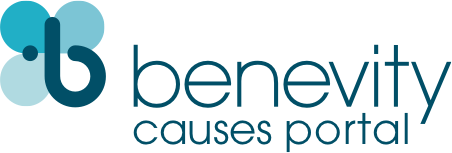WORKING ARTISTS AND THE GREATER ECONOMY
This organization has already been registered
Someone in your organization has already registered and setup an account. Would you like to join their team?Profile owner : l**e@w*********k.c*m
Mission Statement
Working Artists and the Greater Economy (W.A.G.E.) is a New York-based activist organization founded in 2008. Our mission is to establish sustainable economic relationships between artists and the institutions that contract our labor, and to introduce mechanisms for self-regulation into the art field that collectively bring about a more equitable distribution of its economy.
About This Cause
Since its founding in 2008, W.A.G.E.’s work has developed in service of a single achievable goal — regulating the payment of artist fees in the nonprofit sector — but we emerge from a long tradition of artists organizing around the issue of remuneration for cultural work in the United States that dates back to the 1930s. We see the contemporary fight for non-wage compensation as part of a wider struggle by all gig workers who supply content without payment standards or an effective means to organize. In the context of contemporary art, where the unpaid labor of artists supports a more than $60 billion industry, W.A.G.E.’s mission is to establish sustainable economic relationships between artists and the institutions that contract our labor, and to introduce mechanisms for self-regulation into the art field that collectively bring about a more equitable distribution of its economy. From our early days as an all-volunteer activist group through the shift in 2012 to an artist-run 501(c)3 that today operates programs at a national level, our approach to organizing has remained consistent. As an active participant in the art system, we have sought to change institutional practices from within. Whether by using performative, discursive, or research-based strategies to engage with art institutions, W.A.G.E. has maintained a delicate balance between working with and challenging them at the same time. While calling out unpaid labor in the art system has been a key aspect of our work, we have found that real material change has only come about through the introduction of tools to fix it and by mobilizing people to use them. To that end, W.A.G.E. operates two primary programs, W.A.G.E. Certification for institutions, and WAGENCY for artists. W.A.G.E. Certification Launched in 2014, W.A.G.E. Certification is a national program that publicly recognizes those nonprofit institutions demonstrating a history of, and commitment to, voluntarily paying artist fees that meet W.A.G.E.’s payment standards. It is the first model of its kind and the first in the U.S. to establish a sector-wide minimum standard for compensation, as well as a clear set of guidelines for the conditions under which artistic labor is contracted. To date, more than $21 million in fees has been paid out to artists through 137 W.A.G.E. Certified institutions, but its impact extends well beyond these metrics. 10 years on, W.A.G.E. standards have largely become industry standards, demonstrating that structural change is possible in the art economy. WAGENCY WAGENCY was launched in 2018 to provide artists with a transactional platform through which to request and negotiate fees meeting W.A.G.E. standards with un-certified art institutions. In collectivizing the leverage of its membership, WAGENCY was also conceived as an artists’ solidarity union, prefiguring the wave of unionization that began to sweep the art field in 2020. While there are now dozens of unionized workplaces in the sector, non-unionized freelance art workers continue to lack adequate representation and an effective means to organize. Because it is very often artists themselves who constitute this precarious labor force, working temporary gigs as artist assistants, art handlers, teaching artists, administrators and others, we believe that W.A.G.E. has an important role to play in empowering them in these positions. With the forthcoming addition of contracts for art workers, WAGENCY will soon expand into a national cross-sectoral solidarity union that empowers artists in their practices as well as the secondary freelance jobs they do to support themselves. Impact W.A.G.E.’s impact has been recognized internationally, most recently by UNESCO in its November 2023 report, Empowering creativity: implementing the UNESCO 1980 Recommendation Concerning the Status of the Artist; 5th global consultation: “Although not official unions, groups such as W.A.G.E. in the United States of America, are collectively fighting for fair compensation. Through their solidarity union, WAGENCY and their W.A.G.E. Certification program, artists and institutions work collectively to establish self-regulating support mechanisms and ensure a minimum standard for fees and services. This plays an important advocacy role in the face of limited social security protection for artists.” While much has changed in the art field over the past 16 years, there is still an urgent need for collective organizing. W.A.G.E. continues to believe in and build upon what we see as a vital connection between our own sustainability and the active participation of artists, institutions, and art workers in our work.
